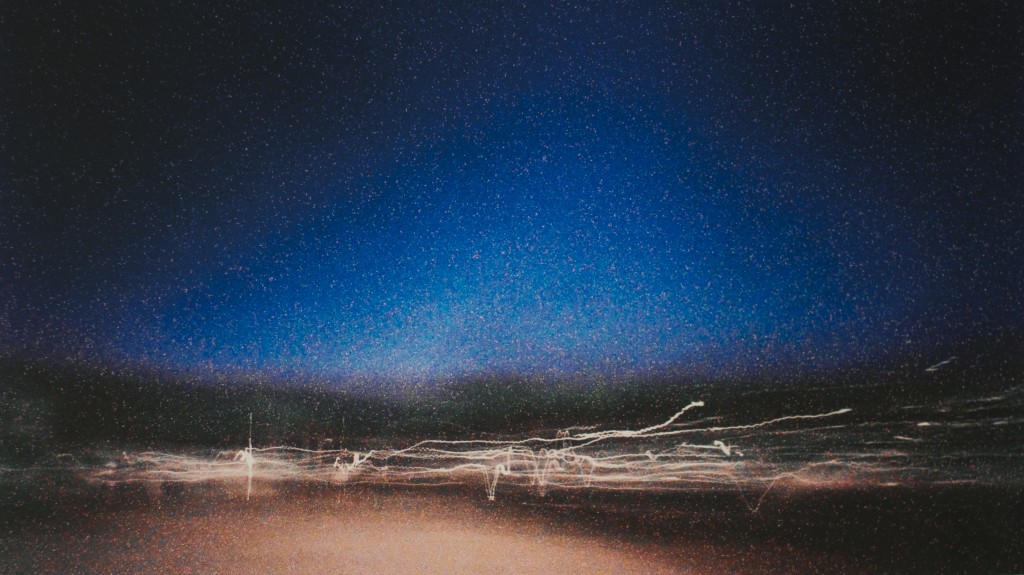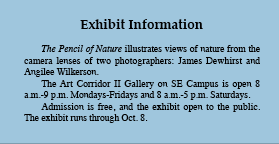Forty art pieces with scenes of migrating birds, cattails and a headless owl fill SE Campus Art Corridor II’s latest exhibit The Pencil of Nature: James Dewhirst and Angilee Wilkerson.
Arlington resident Nisa Chendler viewed Owl and Hawk, a print by Wilkerson.
“Is it dead?” she wondered aloud.
Later, Wilkerson said she has seen bobcats and coyotes and finds it interesting how things are rearranged after the vultures and scavengers get to them.

“That is a decapitated owl, and those are hawk feathers,” she said.
Wilkerson said it is interesting to come upon things like this. She said she loves the woods and is a country girl at heart.
Her grandparents lived in Oklahoma, and she spent a lot of time there as a child.
“It’s part of my blueprint,” she said.
Wilkerson thinks there is sublime beauty in the subtle. Her art depicts the grasslands, prairies, thickets and flood plains of North Texas and Southern Oklahoma.
“This is much more subtle, but it is just as beautiful,” she said.

Residue, another Wilkerson print, caught the eye of SE student Zach Palmer because it was off-centered and the focus was diverted to the side.
“I’m kind of liking this,” he said.
Palmer said the disciplines of art, music and math go together, and one can think outside the box if they can do them all.
Visitors filled Art Corridor II during an opening reception Sept. 8. Some guests mingled and conversed while others gawked. Among the guests was TCC board of trustees member O.K. Carter.
“Not many photographers work with film anymore,” he said.
Carter was impressed with Wilkerson’s and Dewhirst’s views of nature.
“She seems to see the autumn, color-shifting prairie much as some creature scurrying through the windswept grasslands would see it,” he said. “Much of Dewhirst’s work seemed more like a digital exploration of light and movement that happened to take place on the prairie.”
Carter said Dewhirst is having a good time shooting, but the result is that many photos are redundant and, frankly, not all that interesting.
“Photography at its best captures a changing realism that moves with light,” he said. “Abstraction doesn’t work as well.”
Among Dewhirst’s work was Castlebutte Road Frozen Fog, a digital print capturing the image of a lonely gravel road during winter. Another featured two cows standing at opposite ends of the spectrum.
Curator Christopher Blay said part of his job is to view an artist’s work either in galleries or online and then select the best work.
“A curator puts an artist’s work in context,” he said. “They will put together either one or a combination of artists around an idea that is proposed by the curator.”






























